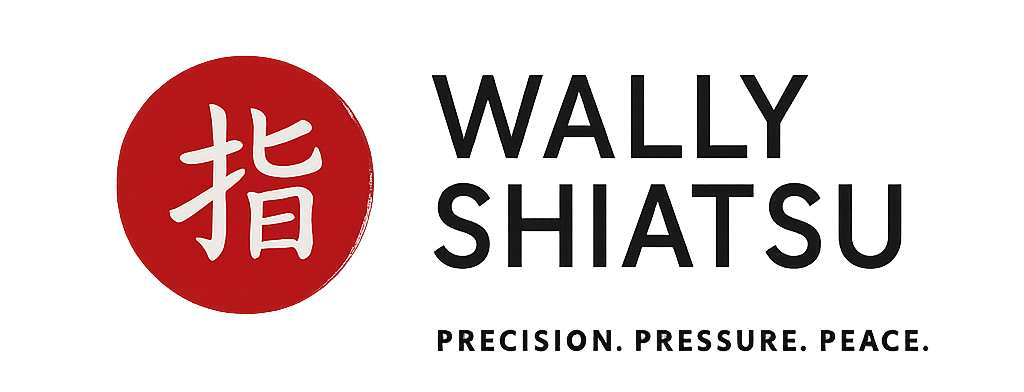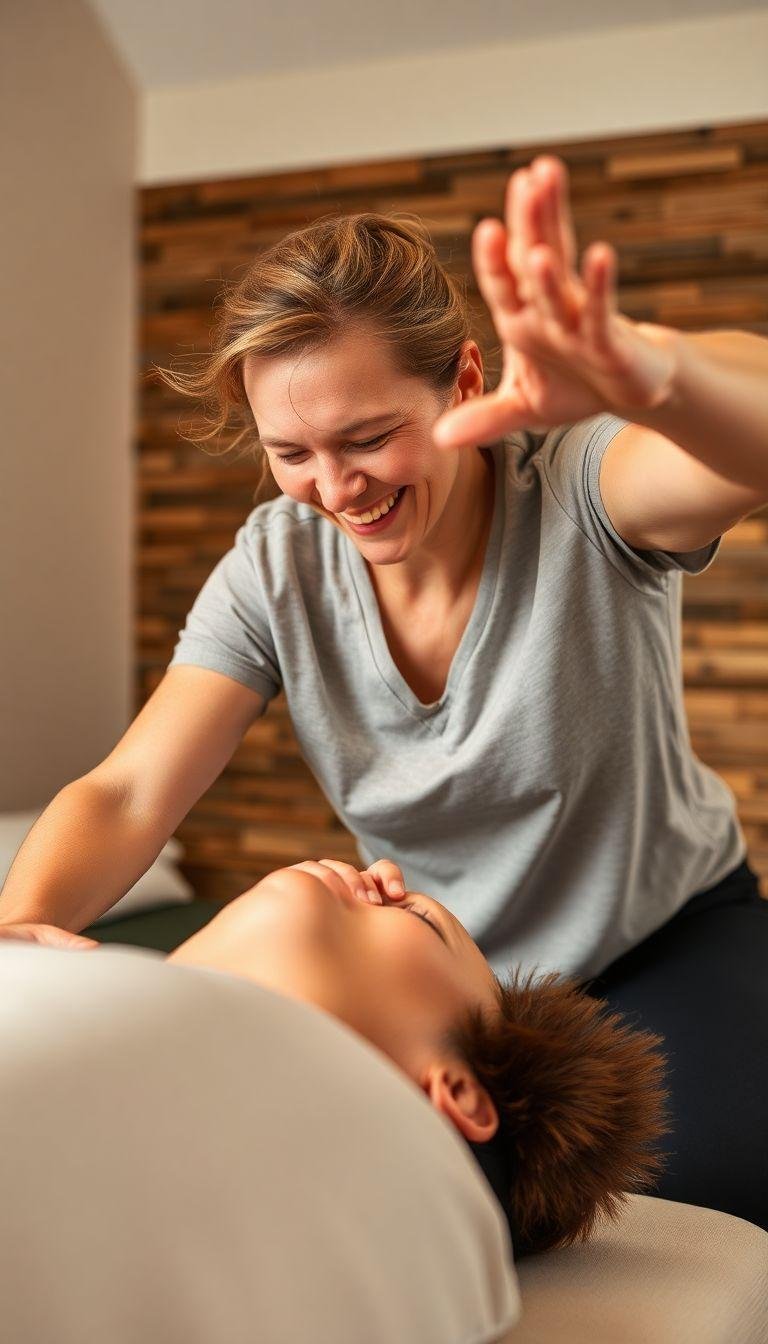Understanding Deep Tissue Massage Techniques
What is Deep Tissue Massage?
Deep tissue massage is a specialized type of bodywork that focuses on the deeper layers of muscle and connective tissue. This technique uses firm pressure and slow strokes to reach the inner layers of muscles and fascia. Unlike a standard massage, which often aims for relaxation, deep tissue massage targets specific areas of tension, helping to alleviate pain and stiffness. For those interested in exploring various massage styles, understanding different massage techniques can provide valuable insights.
Benefits of Deep Tissue Massage for Muscle Tension
Deep tissue massage offers several benefits, especially for those experiencing muscle tension. Some of the key advantages include:
- Pain Relief: Effectively reduces chronic pain by breaking down muscle knots.
- Improved Mobility: Enhances flexibility and range of motion.
- Stress Reduction: While it focuses on deeper layers, it can also lead to relaxation and stress relief, as highlighted in the power of relaxation.
- Enhanced Circulation: Promotes better blood flow, aiding in recovery.
How Deep Tissue Massage Works to Relieve Tension
Deep tissue massage works by applying pressure to specific points in the body. It targets muscle knots and tight areas, which can cause discomfort. Here’s how it helps relieve tension:
| Mechanism | Description |
|---|---|
| Pressure Application | Firm pressure helps to break down tight muscles. |
| Increased Blood Flow | Enhanced circulation brings oxygen and nutrients to tissues. |
| Pain Receptors | The pressure can interrupt pain signals to the brain. |
| Muscle Relaxation | Encourages muscles to relax, reducing overall tension. |
By understanding these techniques, individuals can appreciate how deep tissue massage serves as one of the best techniques for deep tissue massage to relieve muscle tension.
Best Techniques for Deep Tissue Massage to Relieve Muscle Tension
Effective Deep Tissue Methods for Pain Relief
Deep tissue massage is a powerful tool for alleviating muscle tension. Techniques such as stripping, friction, and kneading are commonly used. Stripping involves long, gliding strokes along the muscle fibers, which helps to release tightness. Friction uses back-and-forth movements to break down knots. Kneading works the muscles in a rhythmic motion, similar to how one would knead dough.
Here’s a quick overview of these techniques:
| Technique | Description |
|---|---|
| Stripping | Long, gliding strokes along muscle fibers |
| Friction | Back-and-forth movements to break down knots |
| Kneading | Rhythmic motion working the muscles |
Applying Pressure: Key to Muscle Relaxation
Pressure is crucial in deep tissue massage. It helps to release tension and promote relaxation. However, the right amount of pressure varies from person to person. Some clients may prefer a firmer touch, while others may find lighter pressure more comfortable.
Finding the Right Pressure for Each Client
Therapists should communicate with clients to discover their preferences. A few questions can guide this process:
- How does the pressure feel?
- Is it too much, too little, or just right?
- Are there specific areas that require more focus?
By asking these questions, therapists can tailor the experience, ensuring it meets each client’s needs. This personalized approach not only enhances the massage but also fosters a sense of trust and comfort.
Therapeutic Massage Strategies for Athletes
Sports Massage Techniques for Recovery
Athletes often push their bodies to the limit, and sports massage plays a crucial role in recovery. This type of massage focuses on muscle groups that are heavily used during athletic activities. Techniques such as effleurage, petrissage, and friction are commonly employed.
- Effleurage: Involves long, gliding strokes to warm up the muscles and increase blood flow.
- Petrissage: Involves kneading the muscles to relieve tension and improve flexibility.
- Friction: Targets specific areas of tightness, breaking down adhesions and promoting healing.
By using these techniques, massage therapists can help athletes recover faster and perform better. For more insights on the benefits of massage therapy, you can explore the incredible benefits of massage therapy.
Incorporating Deep Tissue Methods in Sports Massage
Deep tissue massage is another effective strategy for athletes. It focuses on deeper layers of muscle and connective tissue, especially beneficial for those who experience chronic pain or tightness.
- Trigger Point Therapy: Targets specific knots in the muscles, releasing tension and alleviating pain.
- Myofascial Release: Focuses on the fascia, the connective tissue surrounding the muscles, improving mobility and reducing discomfort.
These methods are designed to relieve muscle tension and enhance overall performance.
Enhancing Performance with Targeted Massage
Targeted massage can significantly improve an athlete’s performance. By focusing on specific muscle groups, therapists can help athletes achieve their goals more effectively.
| Technique | Benefits |
|---|---|
| Trigger Point Therapy | Alleviates pain and tension |
| Myofascial Release | Increases flexibility and mobility |
| Sports Massage | Promotes overall recovery and relaxation |
Incorporating these targeted techniques into a massage routine can lead to better results on the field or court.
The Role of Breathing in Deep Tissue Massage
How Breathing Affects Muscle Relaxation Techniques
Breathing plays a crucial role in deep tissue massage. When a client breathes deeply, it helps to relax the muscles further, allowing the therapist to work more effectively. A relaxed muscle is easier to manipulate, leading to better results in relieving tension. When clients focus on their breathing, they can release pent-up stress, making the massage more beneficial.
Teaching Clients to Breathe During Massage
It is essential for therapists to guide clients on how to breathe properly during a massage. By teaching clients to take slow, deep breaths, they can facilitate muscle relaxation. Here are some tips for therapists:
- Instruct clients to inhale deeply through the nose and exhale slowly through the mouth.
- Encourage a rhythm: Breathing in for a count of four, holding for a count of four, and exhaling for a count of four can create a calming pattern.
- Remind clients to focus on their breath throughout the session, as this can keep their minds from wandering and enhance the experience.
Breathing Techniques for Maximum Tension Relief
Here are some effective breathing techniques that can help clients achieve maximum tension relief during deep tissue massage:
| Technique | Description |
|---|---|
| Diaphragmatic Breathing | Inhale deeply into the belly, allowing it to rise. Exhale slowly, letting the belly fall. This technique promotes relaxation. |
| 4-7-8 Breathing | Inhale for a count of 4, hold for 7, and exhale for 8. This method calms the nervous system. |
| Visualization Breathing | Imagine breathing in calm and breathing out tension. This technique creates a mental space for relaxation. |
These techniques not only enhance the massage experience but also give clients tools to manage stress in their everyday lives.
Best Massage Practices for Client Comfort
Creating a Relaxing Environment for Deep Tissue Massage
To foster a soothing atmosphere, a massage therapist should focus on several key elements. The lighting must be soft and calming, helping to set the mood. Using essential oils, such as lavender or eucalyptus, can enhance relaxation. The temperature of the room should be comfortable; not too hot or too cold, ensuring clients feel at ease. For more tips on enhancing the overall experience, consider exploring the different types of massage.
Additionally, having soft music playing in the background can help drown out any distracting noises. The therapist should also consider the arrangement of furniture to create an open and inviting space.
| Element | Recommendation |
|---|---|
| Lighting | Soft and dim |
| Essential Oils | Lavender, Eucalyptus |
| Temperature | Comfortable (around 72°F) |
| Music | Soft and calming |
| Furniture Arrangement | Open and inviting |
Communicating with Clients About Their Needs
Effective communication is vital for a successful massage experience. A massage therapist should begin each session by asking clients about their specific needs and preferences. Questions about areas of tension or discomfort can guide the therapist in providing a tailored experience.
During the massage, it is important for the therapist to check in regularly. Phrases like, “Is the pressure okay?” or “Do you need more focus on a particular area?” can help clients feel heard and valued. This open dialogue fosters trust and encourages clients to express their comfort levels.
Ensuring Client Safety During Deep Tissue Techniques
Client safety is paramount during deep tissue techniques. The therapist should always be aware of the client’s physical limitations or conditions that may affect the massage. It is crucial to avoid any techniques that could cause pain or injury.
Before starting, the therapist should ask about any medical history that may impact the massage. Techniques should be adjusted based on the client’s feedback. If a client expresses discomfort, the therapist should modify their approach immediately.
In addition, the therapist must maintain proper body mechanics to avoid injury to themselves while providing effective pressure. This careful attention to safety not only protects the client but also enhances the overall experience.
Post-Massage Care for Optimal Muscle Recovery
Recommended Aftercare Following Deep Tissue Massage
After receiving a deep tissue massage, the body needs special care to promote healing and relaxation. Following these aftercare tips can help maximize the benefits of the massage:
- Rest: Allow the body to recover. Taking it easy for the rest of the day can help muscles relax.
- Gentle Stretching: Light stretches can maintain flexibility and prevent stiffness.
- Warm Bath: A warm bath can soothe sore muscles and enhance relaxation.
Importance of Hydration After Massage
Staying hydrated is crucial after a massage. Water helps flush out toxins that may have been released during the treatment. Here’s why hydration matters:
- Boosts Recovery: Water aids in muscle recovery and reduces soreness.
- Prevents Dehydration: Massages can sometimes lead to dehydration. Drinking water helps counteract this effect.
| Hydration Tips | Benefits |
|---|---|
| Drink water before bed | Promotes overnight recovery |
| Carry a water bottle | Encourages regular hydration |
| Avoid caffeine | Caffeine can dehydrate the body |
Tips for Clients to Maintain Muscle Relaxation
To keep muscles relaxed after a massage, clients can follow these simple tips:
- Mindfulness: Practicing mindfulness or meditation can help keep stress levels low.
- Warm Compress: Applying a warm compress to sore areas can provide ongoing relief.
- Light Activity: Engaging in light activities, like walking, can keep blood flowing without straining muscles.


